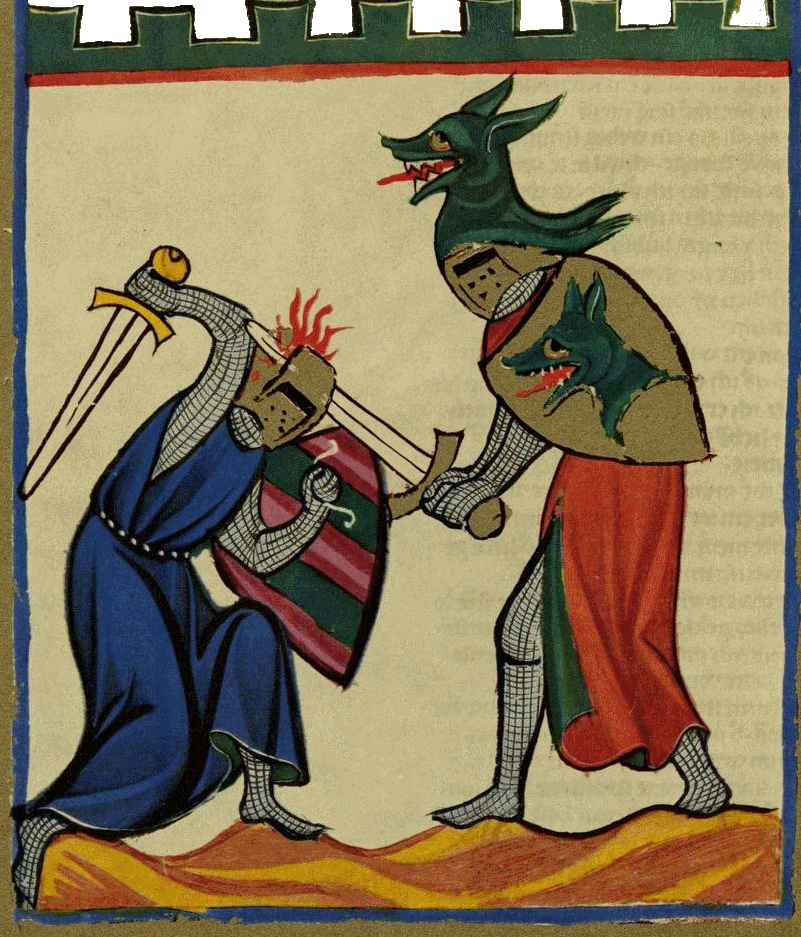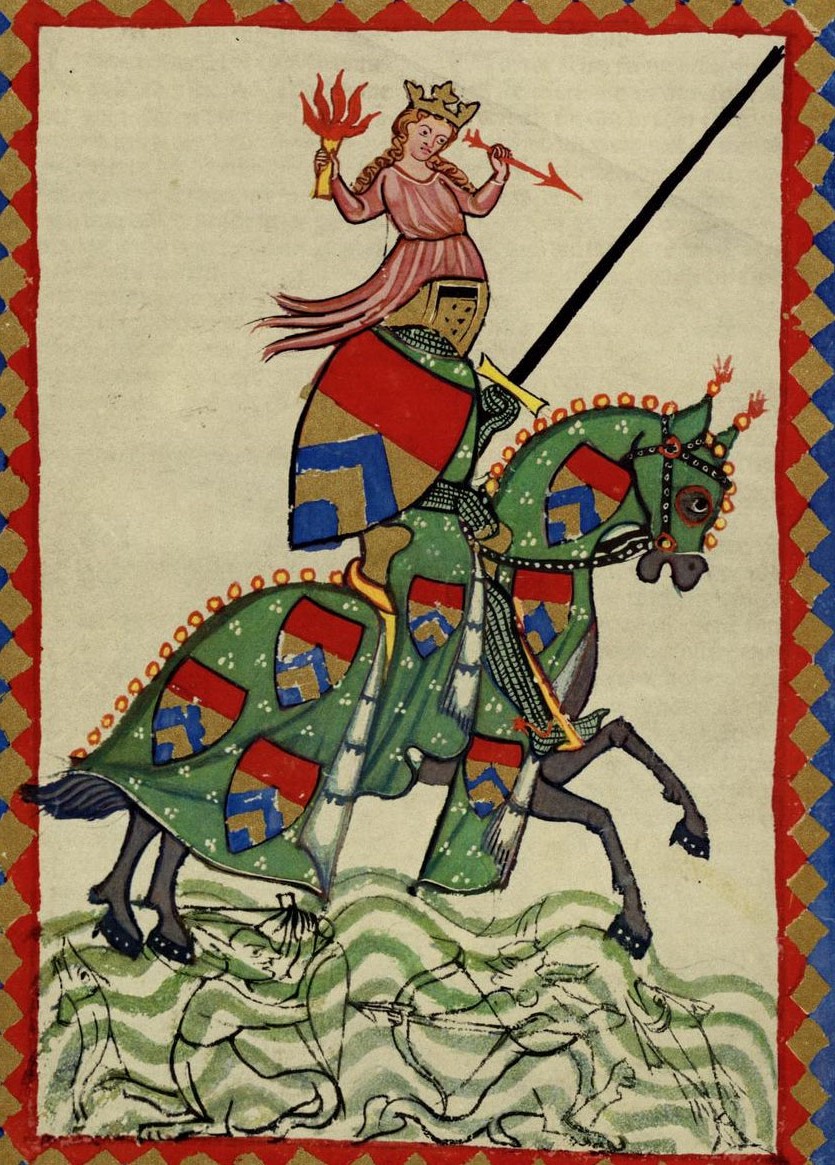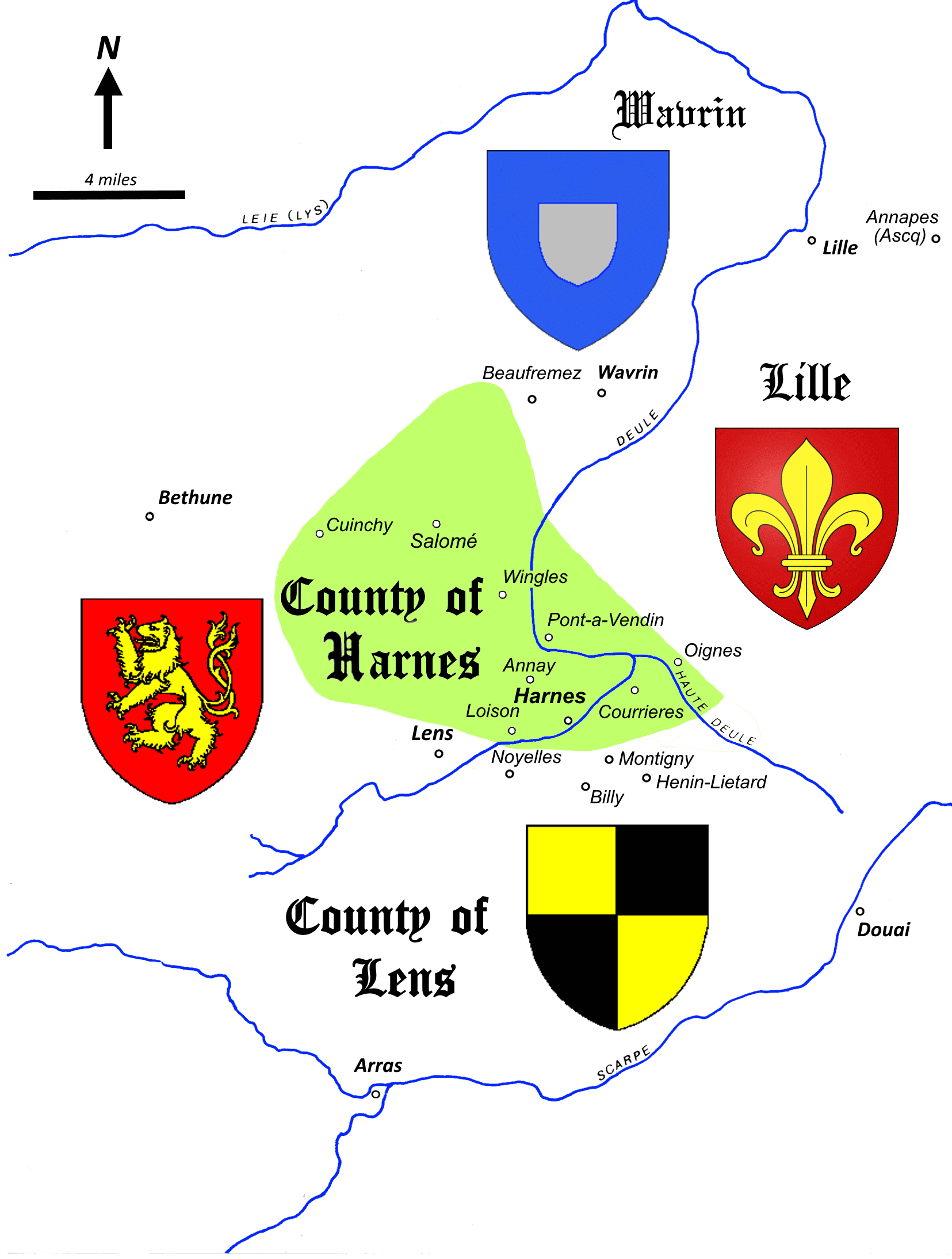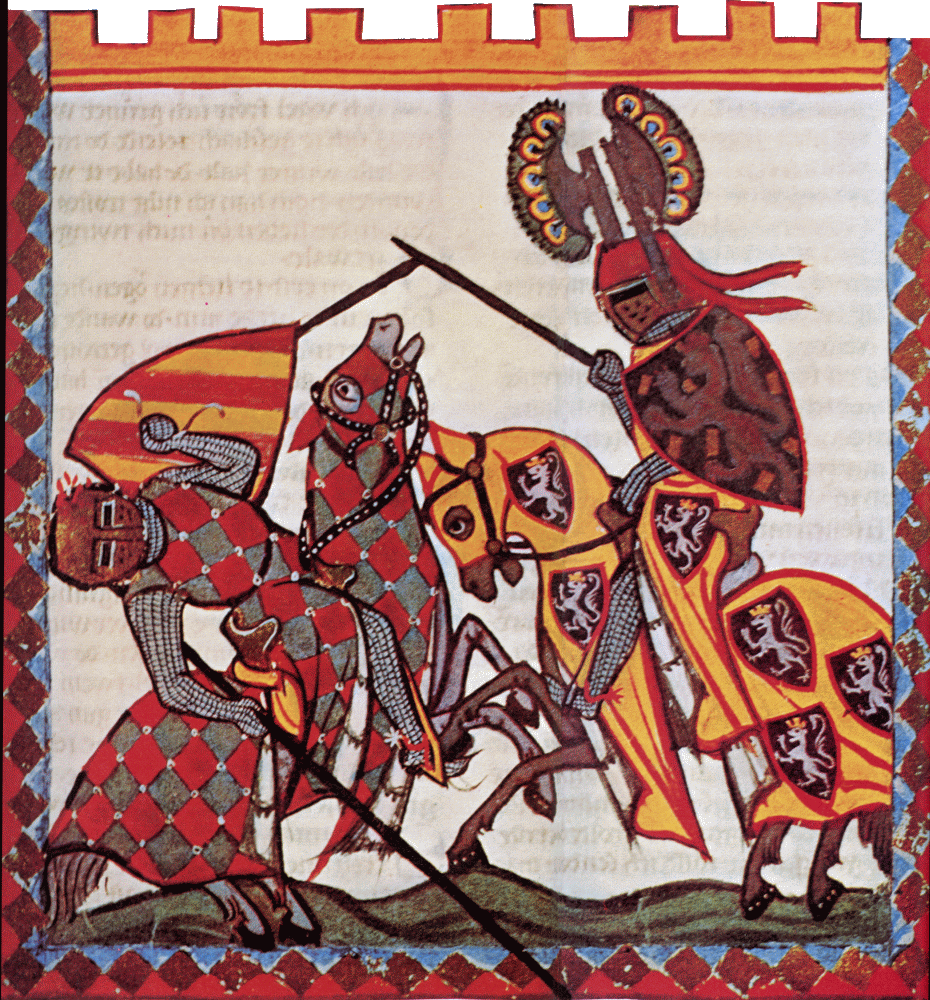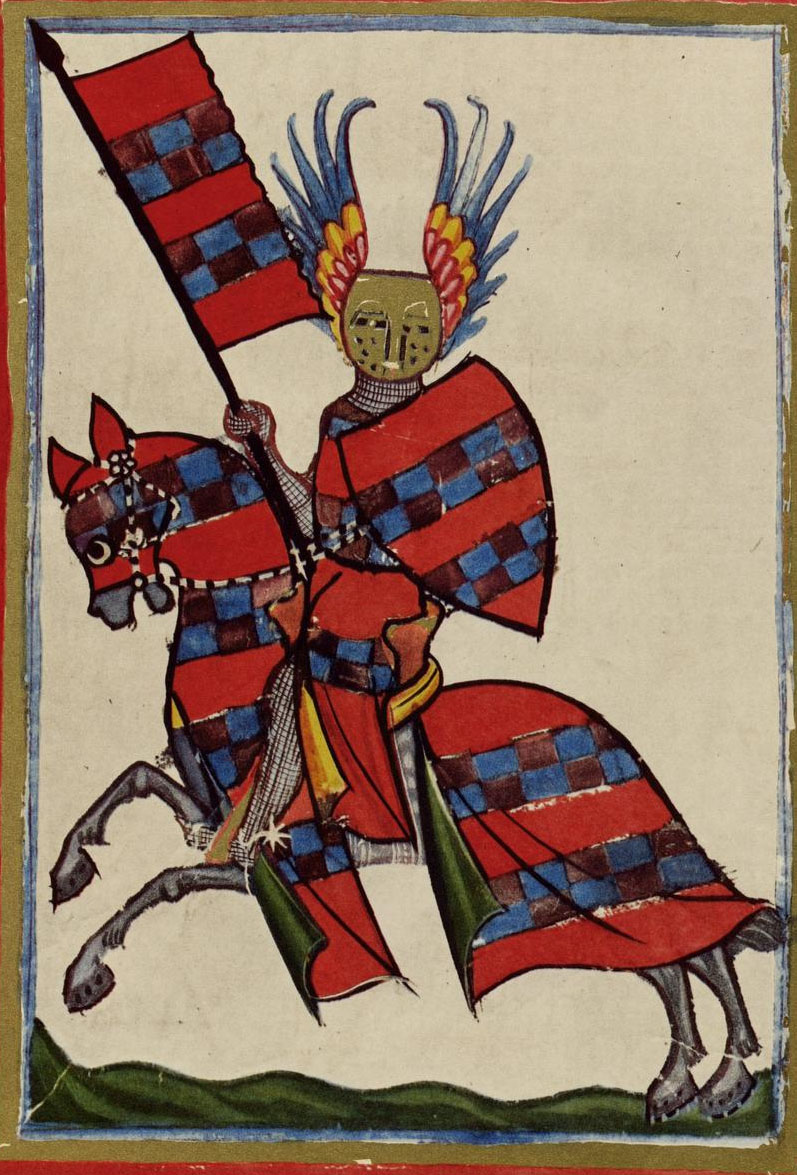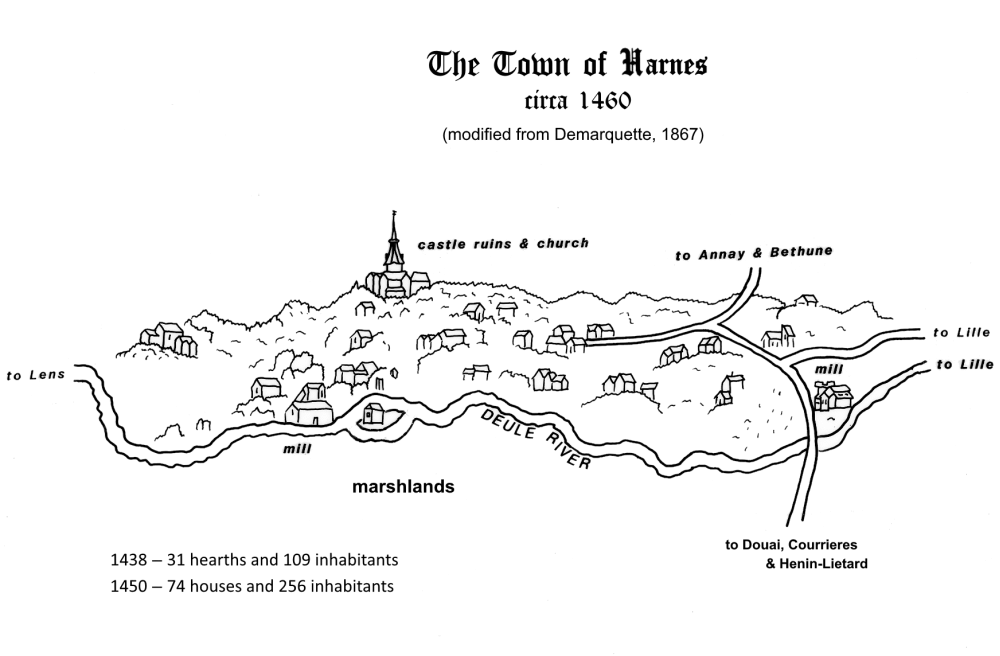|
The so-called "County of Harnes" is largely an invention of 19th-century historians to denote lands that were held by the medieval Lords of Harnes. The main part of these lands was Harnes itself, an area of marshlands where the main and upper forks of the Deule River come together. These marshlands were owned by the Abbey of St. Peters of Ghent, and they existed independant of neighboring fiefs and counties. But there were also outlying districts not owned by the abbey, such as Cuinchy and Salome, that were held in fief by the lords of Harnes from the Counts of Flanders, or the Dukes of Burgundy. Thus, the County of Harnes collectively refers to lands owned by the abbey, together with adjacent fiefs not owned by the abbey. However, Medieval chroniclers do not refer to a "County of Harnes" as such, and most likely the name was seldom used, if at all, in the Middle Ages.
| |||||
 Harnes in the Middle Ages
Harnes in the Middle Ages 
